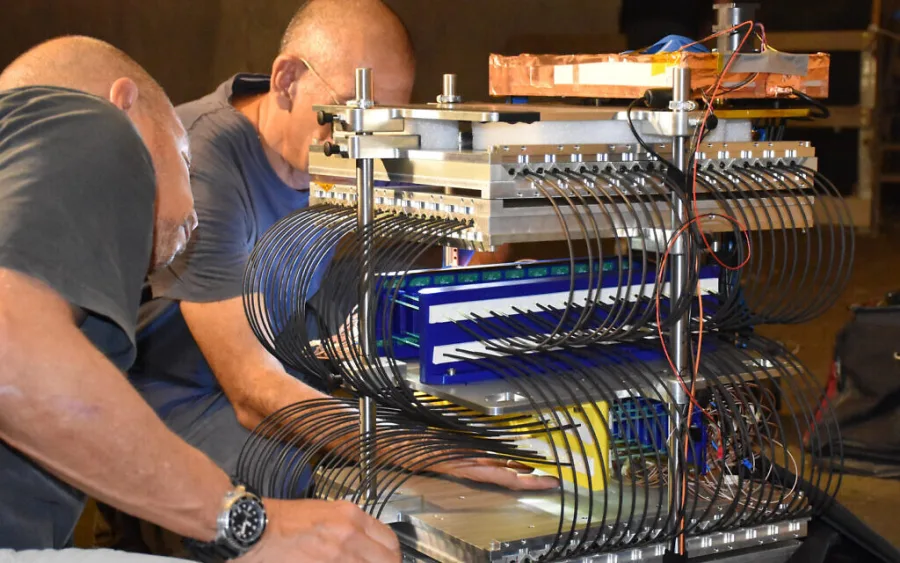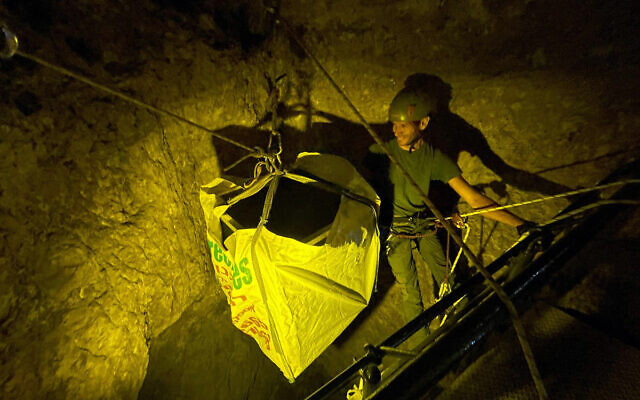Unraveling Jerusalem's Secrets: How Science is Peeling Back the Layers of History Beneath the Holy City
Israeli Researchers build a muon detector in a cave under Jerusalem's City of David in 2023. (Photo: Gilad Mizrachi/Tel Aviv University)
In a convergence of science and history, a team of researchers from Tel Aviv University has embarked on an ambitious quest to unveil the hidden mysteries buried beneath the ancient city of Jerusalem. Using cutting-edge technology akin to a time machine, they are peering into the depths of the earth, revealing secrets that have lain dormant for millennia.
Imagine lowering a device resembling a relic from the future into an underground cavern outside the Old City of Jerusalem. This device, bristling with metal components, wires, and tubes, is not a time machine, but rather a muon detector. Developed by a team of archaeologists, this ingenious contraption harnesses the power of subatomic particles to penetrate layers of history, uncovering the forgotten passages and chambers that once thrummed with life beneath the city's ancient streets.
Muon radiography, as it's called, utilizes muons—tiny yet powerful particles born from cosmic collisions in the atmosphere. These particles, akin to heavyweight electrons, possess the remarkable ability to traverse solid rock and structures, making them the perfect tool for exploring underground realms without disturbing the delicate balance above.
Led by visionaries like Professors Oded Lipschits and Erez Etzion, the team's mission is nothing short of revolutionary. They seek to map the intricate network of tunnels and passageways that crisscross beneath Jerusalem's surface, offering glimpses into the lives of its ancient inhabitants. From secret water sources to fortified escape routes, these underground arteries tell the tale of a city shaped by survival and resilience.
One of the project's most tantalizing goals is the search for hidden pathways leading to the revered Temple Mount. Positioned strategically near the Gihon Spring and the 'Stone Stepped Structure,' the muon detectors stand as sentinels, gazing into the depths in search of clues that could rewrite history. By analyzing the flow of muons, the researchers hope to detect subtle deviations indicative of clandestine passages, long since lost to time.
For historians like Prof. Yuval Gadot, this endeavor represents more than just scientific curiosity—it's a quest for understanding. The City of David, with its labyrinthine tunnels and ancient ruins, holds the key to unraveling Jerusalem's past. Yet, many of these treasures remain beyond reach, buried beneath layers of politics and conflict.
Israeli Researchers move a muon detector into a cave under Jerusalem's City of David in 2023. (Photo: Gilad Mizrachi/Tel Aviv University)
Indeed, the project is not without its challenges. The tensions surrounding archaeological digs in Silwan underscore the delicate balance between scientific inquiry and cultural heritage. As the team grapples with logistical hurdles and financial constraints, the dream of a fully realized muon imaging array hangs in the balance.
But amidst the challenges, there is hope. With each passing day, the muon detectors inch closer to unveiling the secrets hidden beneath Jerusalem's ancient streets. As Prof. Lipschits aptly states, "Understanding our history is paramount." Through the marriage of science and archaeology, we stand on the precipice of a new era—one where the mysteries of the past are brought to light, illuminating the path forward for generations to come.
In the heart of Jerusalem, where the echoes of history reverberate through time, a new chapter is being written—one that promises to reshape our understanding of the world's most sacred city. And as the muon detectors continue their silent vigil beneath the earth, they remind us that the past is not lost, but waiting to be rediscovered, one particle at a time.








